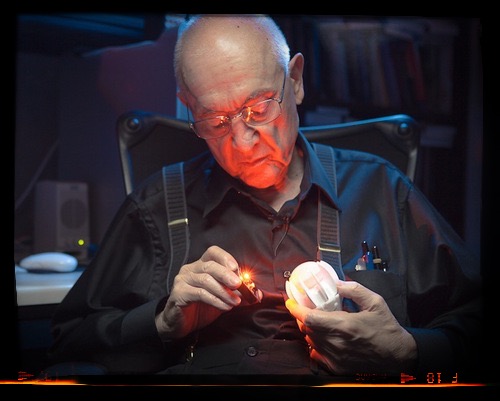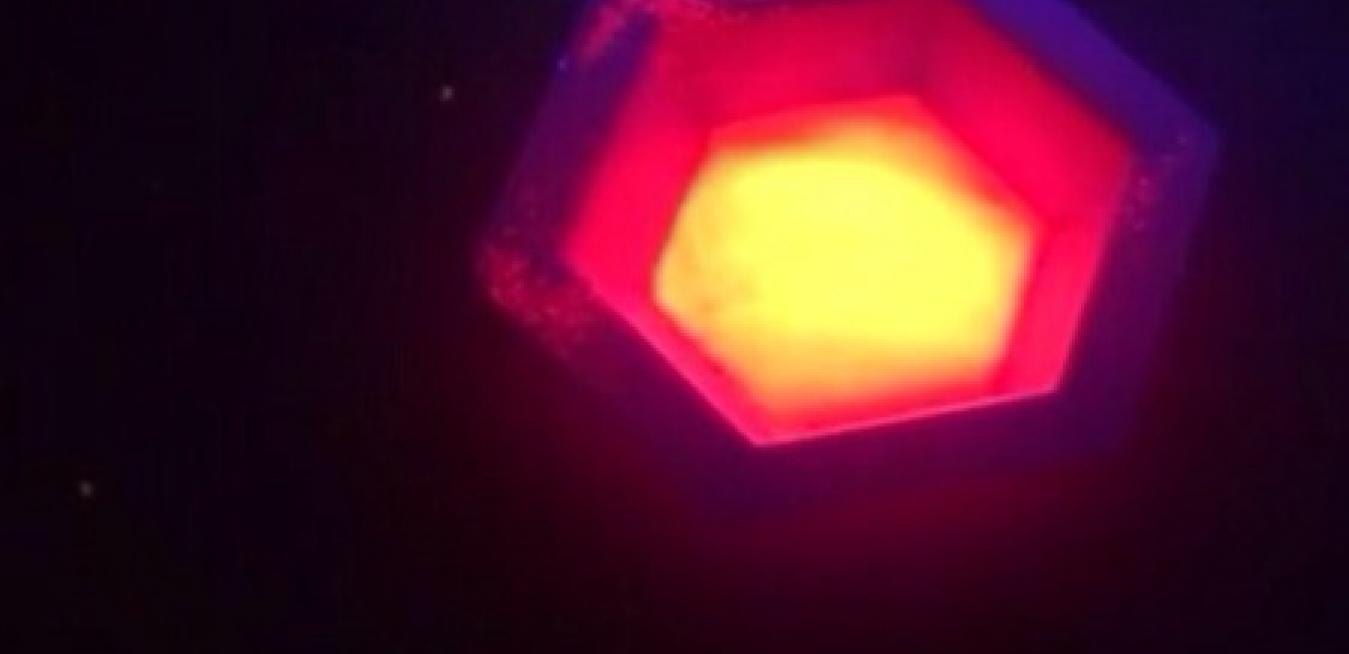That’s because red is quirky, just like the love it’s frequently picked to represent. Deep red makes other colors like green and yellow pop. But on a screen it appears dim to the human eye because its wavelength can quickly shift to the invisible, infrared part of the spectrum. TV manufacturers, who for a long time had to choose between screen brightness and appearance, often settled on a compromise: displays with a broad red profile that had enough brightness but also washed out yellows, greens and oranges.
But the ground shifted more than five years ago when GE materials scientists came up with a better way to display red. Anant Setlur, Jim Murphy and their team at GE Global Research in upstate New York, together with colleagues at Current by GE in Ohio, discovered that a chemical compound called potassium fluorosilicate with manganese (PFS), a yellow powder, could overcome this trade-off between brightness and appearance. GE patented the technology for use in light-emitting diodes, better known as LEDs.
In previous decades, GE would have held on to this important find and used it exclusively for GE products. (A GE scientist invented the first practical red light LED in the 1960s.) But over the past five years, the company has changed its approach to intellectual property (IP). Instead of only using the ideas in-house, GE started looking for licensing partners. Today, more than 80 percent of the “high-color-gamut-display” LED market has licensed GE’s PFS technology for use in LEDs for TV screens, tablets and phones. The result is the vivid colors you can now see today.
These licenses have also helped grow GE’s own business. Current by GE’s chemical plant in Cleveland manufactures and supplies this high-quality PFS-based phosphor to several of its licensees. “This has been a fundamental shift,” says Patrick Patnode, president of licensing at GE Ventures. “Back in the day you could o it alone, but now we’re looking for new ways of optimizing our solutions.”
 Above: Nick Holonyak invented the first practical LED that emitted visible light. Image credit: GE Reports. Top: Today, more than 80 percent of the “high-color-gamut-display” LED market has licensed GE’s PFS technology for use in LEDs for TV screens, tablets and phones. Image credit: GE.
Above: Nick Holonyak invented the first practical LED that emitted visible light. Image credit: GE Reports. Top: Today, more than 80 percent of the “high-color-gamut-display” LED market has licensed GE’s PFS technology for use in LEDs for TV screens, tablets and phones. Image credit: GE.Patnode has been at the head of this movement. A 23-year company veteran, Patnode started out as a GE lawyer writing patent applications. The job kept him busy, given that every year GE employees file more than 2,400 patents. But in 2013, he moved over to GE Ventures — GE’s venture capital arm, which invests in and helps build new businesses — and jumped into the fast-moving world of tech startups. He saw that if GE was going to profit from the creative ferment at GE Ventures, the 125-year-old company was going to have to think differently.
Patnode knew the company could find new sources of revenue and move into new markets by selectively licensing GE technology to new partners. “Just as the flick of Edison’s light switch in 1879 did much more than illuminate a single room, today we want every invention to solve not only the problem for which it was designed, but many others,” Patnode wrote recently in IAM magazine. “Simply put, sharing our inventions with creative entrepreneurs and partners around the world gets more people thinking about, and using, GE technology to solve important problems — and ultimately introduces these technologies to new industries.”
But it wasn’t an easy sell. His colleagues at GE Ventures were comfortable in the worlds of equity and licensing, but Patnode also had to inspire a new mindset within GE. “I pushed it,” Patnode says. “If we were in a meeting about intellectual property that wasn’t being used much internally, people were more open to selling that.”
Patnode’s philosophy is that patent deals first have to do no harm to the company. GE isn’t in the business of making TV screens, for example, so licensing the PFS patents made a lot of sense. Another project involved India’s Tata Power, which is using one of GE’s hybrid power systems to electrify remote villages in the country.
Patnode expects GE, which holds more than 50,000 active patents, to do more licensing deals as executives and engineers get more comfortable with the concept. “In working with startups and established companies, we can test hypotheses faster than ever before — moving innovative products to market faster or halting costly development at the earliest sign of failure,” Patnode wrote in his IAM piece.
Says Patnode: “We’ll go case by case and pick the right partners and the right business models. These deals can take years but we’ve made a good start.”





